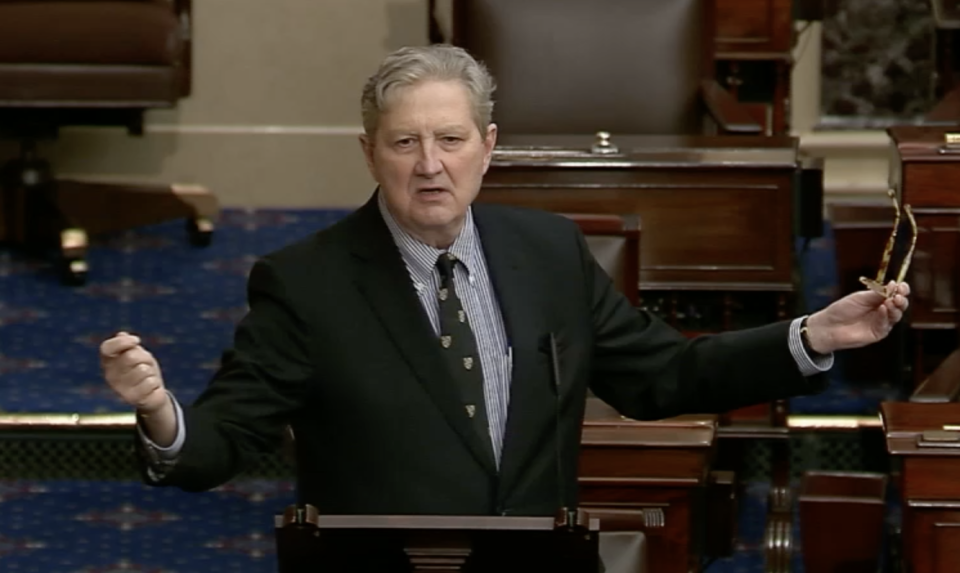October 22
October 22, 2007
Richard Weaver
October 24, 2007Two organizations whose aims are to protect Terrebonne Parish against flooding from hurricanes are supporting somewhat different flood-prevention plans.
The Houma-based Morganza Action Coalition (MAC) is backing the Morganza-to-the-Gulf project, developed by the U.S. Army Corps of Engineers more than 15 years ago. The $888 million plan provides for the construction of a 70-mile system of floodgates, hurricane protection levees and other water-control structures.
Residents of Terrebonne Parish approved a sales tax in 2001 to supply the necessary local match, but the bulk of the money for the project must come from the federal government.
Funding for the plan is included in the Water Resources Development Act (WRDA) bill passed by Congress earlier this year, but expected to be vetoed by President George W. Bush.
The Bush Administration believes the bill contains unnecessary spending, said Robin Winchell, spokesperson for U.S. Rep. Charlie Melancon (D-Napoleonville).
Melancon will vote to override Bush’s veto, she said.
The Multiple Lines of Defense Assessment Team, made up of the coastal preservation groups the Lake Pontchartrain Basin Foundation and the Coalition to Restore Coastal Louisiana, issued a report in August countering MAC’s reliance on water-control structures to keep out floodwaters during hurricanes.
“MAC prefers the existing alignment,” said Carlton Dufrechou, director of the Lake Pontchartrain Basin Foundation. The assessment team’s plan “is much more reliable than the one proposed by the Corps of Engineers,” he said.
The assessment team’s report asserts maintaining the integrity of coastal wetlands is as important to preventing flooding as building water-control structures.
“Any investment in restoration is part of the coastal buffer which is external to the levees,” the report states.
Coastal habitat restoration includes freshwater diversion, marsh creation, barrier island restoration, shoreline protection and oyster reef restoration.
“Levees alone won’t do it,” Dufrechou said. “You need a self-sustaining coast outside of the levee system. We need to restore the plumbing of the coast. It’s the primary storm buffer.”
The Multiple Lines of Defense Strategy described in the report consist of the continental shelf in the Gulf of Mexico, barrier islands, sounds, marsh landbridges, natural ridges, manmade soil foundations (highways and railroads), floodgates, flood-protection levees, pumps, elevation of structures and evacuation.
“You’ve got to have levees, but try to elevate all of our assets,” Dufrechou said.
The report points out that for levees, “the intent is to have zero storm surge flooding on the protected side, but an unintended consequence may be to increase water levels on the flood side.”
Dufrechou added, “Levees closer to water are more vulnerable.”
MAC’s largest concern about the Multiple Lines of Defense Strategy is twofold: The plan “leaves thousands of coastal residents unprotected and relies on strategies that look good on paper but in the real world would take too long to help Houma and other communities,” a MAC news release states.
The release contends that lower Dulac, Pointe-aux-Chenes, Monte-gut, lower Chauvin and Dularge would be left unprotected in the assessment team’s plan.
Dufrechou conceded that around 2,000 residences in Terrebonne Parish would fall outside of the Multiple Lines of Defense Strategy, but he said the plan provides money for elevating homes. Also, ring levees would be constructed around Montegut and Dulac.
“Mostly, we go with lessons learned from Katrina: build on higher ground, elevate structures,” he said. “The bottom line is it’s the best possible storm protection for the nearest term possible.”
MAC President Dan Walker maintains that the assessment team’s plan really leaves thousands more residences in Terrebonne Parish unprotected, and that the strategy would take far too long to implement.
“Morganza to the Gulf has an alignment approved by the Corps of Engineers,” he said. “It has gone through every regulatory process with the best science available. We’re waiting on the president to sign the bill. Now this group comes out with this study. They want ring levees around communities, and flood the rest of the area.”
Walker said the two years the assessment team spent on its study before issuing the August report was not a sufficient amount of time.
“I don’t think they have accurate information,” he said. “It’s a shotgun approach. It’s an overreach on their part to assert after a brief period of time their alternative to Morganza to the Gulf, which has taken 15 years. We can’t wait another 15 years for their alternative system to be examined.
“If we had another 60 years, maybe we could use their study,” he said. “Every section of that project has to be environmentally inspected. At this late date, we have to go with it (Morganza to the Gulf).”
Walker believes implementing the Multiple Lines of Defense Strategy would discourage Congress from funding Morganza to the Gulf through WRDA. He admits the Morganza project does not include barrier island restoration. MAC agrees with the assessment team about replenishing marshes through the introduction of fresh water.
Still, the team’s strategy “creates confusion,” Walker said.
He insists the assessment team has good intentions, and that he has respect for its members.
However, “the New Orleans press has given them credibility because they’ve done good work in the past,” he said.
The strategy “approves every project in the New Orleans area, but singles out ours,” he said.
(Dufrechou claimed he had never heard of MAC until he read about the group in a recent New Orleans Times-Picayune article.)
“It’s scientific arrogance to say you have the best science,” Walker said about the assessment team’s approach.
Dufrechou maintained, “We’re confident of the science in (the team’s plan), but it’s not set in stone. If something is wrong, we want to know.”











